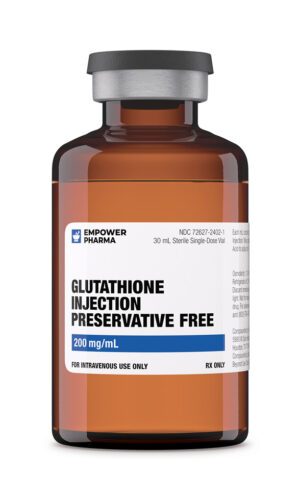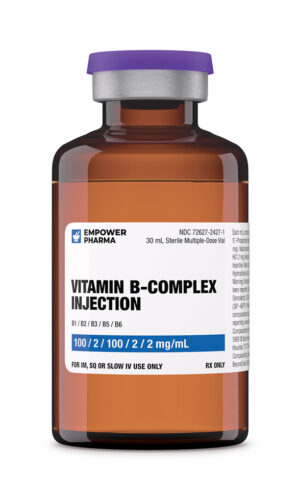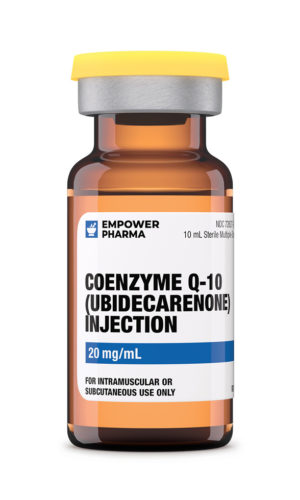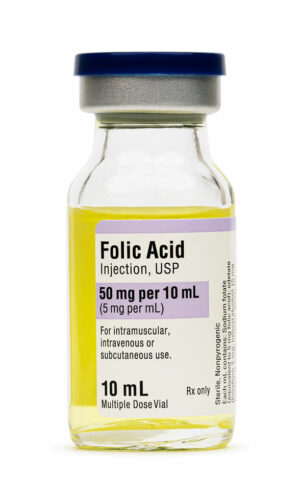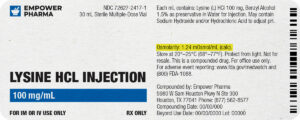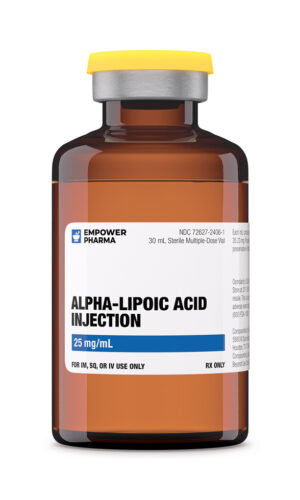


Alpha lipoic acid (ALA, thioctic acid) is an endogenous, potent antioxidant that is purported to be useful in the treatment of diabetes mellitus, diabetic neuropathy, dementia secondary to Alzheimer’s disease or human immunodeficiency virus (HIV) infection, glaucoma, amanita mushroom poisoning, and alcoholic liver disease. Studies supporting the use of ALA in the treatment of diabetes and diabetic neuropathy are available. The majority of studies are short in duration (e.g., 3—5 weeks) and were completed with a small number of study participants; however, small studies of both 6 months and 24 months duration have been completed in patients with diabetic neuropathy. ALA has been used extensively in the treatment of diabetic neuropathy in Germany since 1959. Studies supporting the effectiveness of ALA in other purported indications in humans are lacking or inconclusive. Further investigations of ALA in the treatment of Alzheimer’s disease, HIV-related dementia, or liver diseases are needed before it can be recommended for use for those conditions.
Diabetes mellitus: Alpha lipoic acid may decrease blood glucose concentrations; patients with diabetes mellitus should use ALA with caution and monitor their blood glucose concentrations. Patients should also be instructed on the signs and symptoms of hypoglycemia.
Pregnancy and lactation: Evidence supporting the use of ALA in pregnancy and lactation is lacking. Women who are pregnant or breast-feeding their infants should avoid its use until information regarding safety and efficacy are available.
Antidiabetic agents: Alpha lipoic acid has been shown to increase glucose utilization and decrease insulin resistance. Patients receiving antidiabetic agents in combination with ALA may be at increased risk for hypoglycemia; dosage adjustments of antidiabetic agents may be necessary. Furthermore, patients should be instructed to monitor their blood glucose concentrations while taking ALA. In one study, some patients with type 2 diabetes mellitus receiving both ALA and sulfonylureas required a dose reduction in the sulfonylurea due to mild symptoms of hypoglycemia (Jacob et al, 1999)
Drugs that decrease the effects of antidiabetic agents: Alpha lipoic acid has been shown to increase glucose utilization and decrease insulin resistance. Patients receiving other drugs that may increase blood glucose concentrations or insulin resistance may counteract the beneficial effects of ALA. Such drugs include anti-retroviral protease inhibitors, atypical antipsychotics, beta-blockers, corticosteroids, cyclosporine, dextrothyroxine, diuretics, glucagon, isoniazid, INH, niacin, phenothiazines, somatropin, rh-GH, sympathomimetics, tacrolimus, triamterene, and thyroid hormones. NOTE: This list is not inclusive of all drugs that can decrease the effects of antidiabetic agents.
Drugs that increase the effects of antidiabetic agents: Alpha lipoic acid has been shown to increase glucose utilization and decrease insulin resistance. Patients receiving other drugs that may decrease blood glucose concentrations or insulin resistance may enhance the beneficial effects of ALA, possibly causing hypoglycemia. Such drugs include ACE inhibitors, androgens, bortezomib, chromium, disopyramide, fibric acid derivatives, garlic, Allium sativum, green tea, guanethidine, horse chestnut, Aesculus hippocastanum, MAOIs, octreotide, and orlistat. Patients with diabetes taking ALA plus any of these other drugs should be advised to monitor their blood glucose concentrations. NOTE: This list is not inclusive of all drugs that increase the effects of antidiabetic agents.
Drugs that increase or decrease the effects of antidiabetic agents: Alpha lipoic acid has been shown to increase glucose utilization and decrease insulin resistance. Patients receiving other drugs that may increase or decrease blood glucose concentrations or insulin resistance may counteract the beneficial effects of ALA or enhance its effects and increase the risk of hypoglycemia. Such drugs include clonidine, cisapride, ethanol, lithium, metoclopramide, pentamidine, and quinolones. Patients with diabetes taking any of these drugs in combination with ALA should be advised to monitor their blood glucose concentrations. NOTE: This list is not inclusive of all drugs that may increase or decrease the effects of antidiabetic agents.
Drugs that mask the signs and symptoms of hypoglycemia: Alpha lipoic acid has been shown to increase glucose utilization and decrease insulin resistance; hypoglycemia may be possible. Patients receiving other drugs that mask the signs and symptoms of hypoglycemia such as beta-blockers, clonidine, reserpine, guanethidine in combination with ALA should be advised to monitor their blood glucose concentrations. NOTE: This list is not inclusive of all drugs that may mask the signs and symptoms of hypoglycemia.
Alpha lipoic acid appears to be well-tolerated. In clinical trials of patients with diabetes, a few patients reported symptoms consistent with mild hypoglycemia. In addition, allergic skin conditions have been reported in patients taking oral ALA. In a study in patients with peripheral neuropathy, a dose-dependent increase in the incidence of nausea, vomiting and vertigo was reported with the highest incidence in those patients taking 1200 mg and 1800 mg/day PO of ALA (Ziegler et al., 2006).
Store this medication at 68°F to 77°F (20°C to 25°C) and away from heat, moisture and light. Keep all medicine out of the reach of children. Throw away any unused medicine after the beyond-use date. Do not flush unused medications or pour down a sink or drain.

